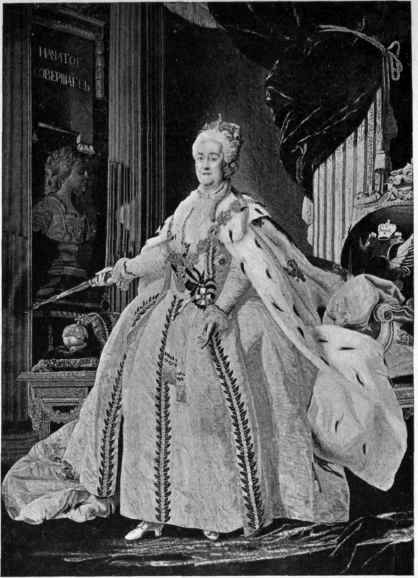Russian Looms
Description
This section is from the book "Tapestries; Their Origin, History And Renaissance", by George Leland Hunter. Also available from Amazon: Tapestries; Their Origin, History, And Renaissance.
Russian Looms
The Imperial Tapestry works, founded by Peter the Great in St. Petersburg in 1716, with workmen from Beauvais under Béhagle the younger, produced a number of important tapestries in the XVIII century, of which there are examples in the Imperial Carriage Museum. The Royal Swedish Collection has a number of tapestry portraits executed on these looms, illustrated in Boettiger Swedish. For illustrations of Russian tapestry portraits of Catherine the Great and Peter the Great, the former in the Metropolitan Museum, the latter in the Moscow Museum of Arms and Armour, see plate no. 229. For history of these works that suspended operation in the middle of the XIX century, see Spiliotti Russian, who also gives a descriptive list of the tapestries produced.


Plate no. 229. On the left, tapestry portrait of Peter the Great woven in 1840 at the Imperial Russian Tapestry works in St. Petersburg. Now in the Moscow Museum of Arms and Armor. On the right, tapestry portrait of Catherine the Great in the Metropolitan Museum, woven at the same factory in 1811 and signed in Russian at the bottom of the column on the left, P. Burg. 1811 G., the final G standing for goda Russian for year and not for Gobelin as has been suggested by some. The Nachatoye Soverchayet above the statue is the Russian motto " What is begun, is accomplished".
Continue to:


